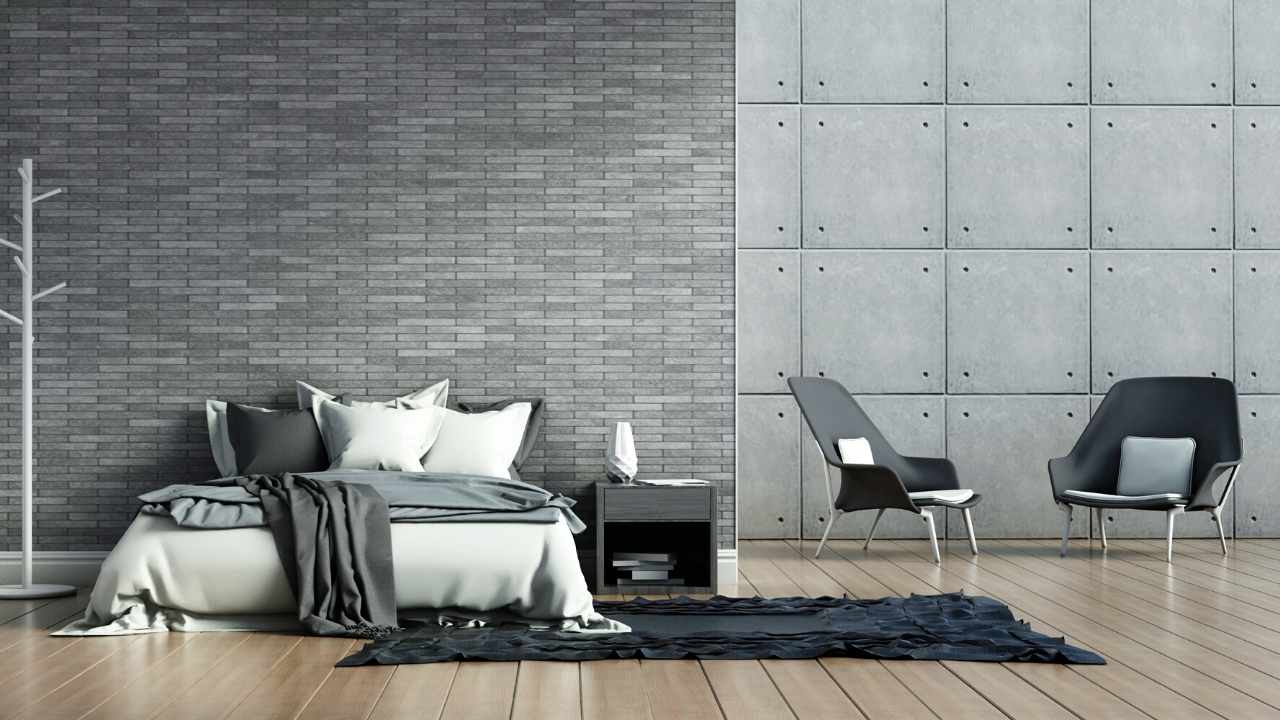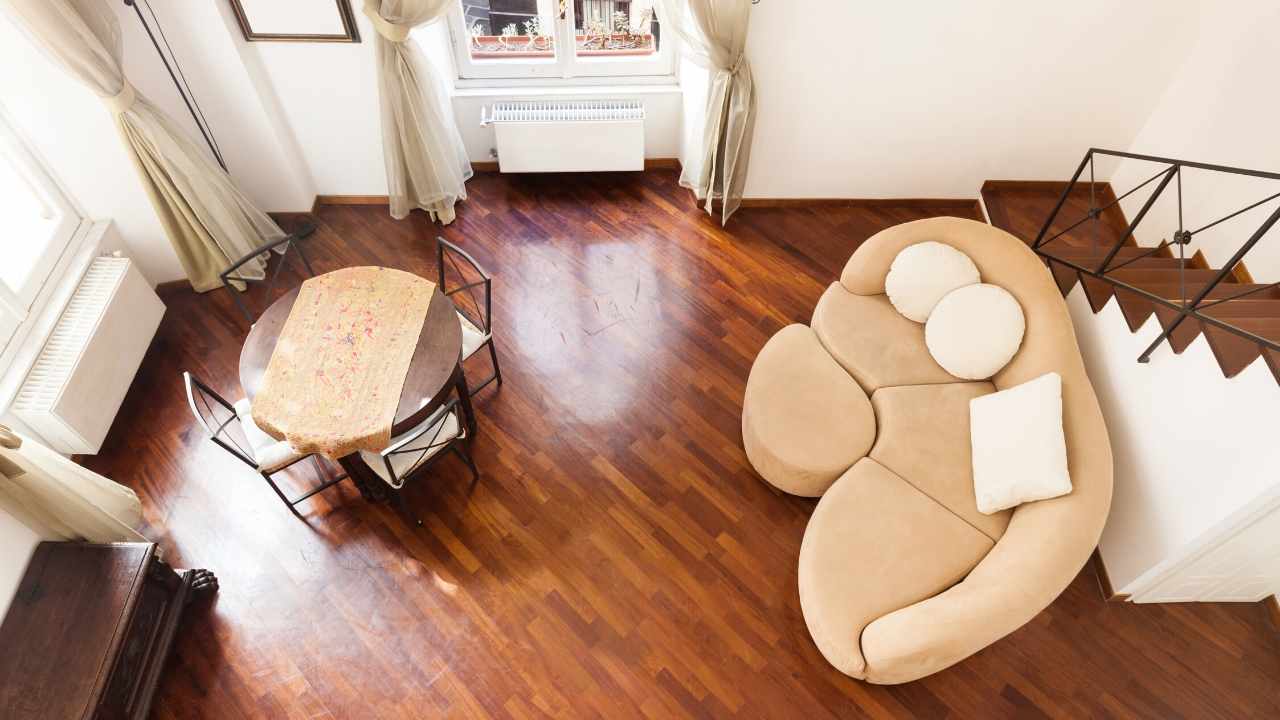
You will notice a much larger bathroom in the before-and-after master bathroom remodel. It used to be a dull room with double doors running across the entry. The glass block window was outdated and needed replacement, and the cabinetry had little storage or space for knees. The tub was old, inoperable, and took up a lot of space. The doorway to the closet was expanded to accommodate the new shower, and the wall behind it was replaced with a pattern white subway tile.
The homeowner reused the 1935 gray bathtub and used it in the master bathroom remodel. A herringbone tile accent stripe was added to the shower feature walls. The designer maintained a neutral color palette but added visual interest. The bathroom's large accent stripe of tiles is what ties the entire project together. She also repurposed the existing sink, which had been installed in the house in 1948. Ikea purchased a new sink to replace her old one.

A scope of work must be prepared by the contractor. You or another person can write this scope of work, but it is important to clearly define what is included in the project. It will usually include the removal of old tiles and debris, replacement of cement backer boards, installation of new tile, grouting, and connection to plumbing. The contractor will also need to prep and paint the walls. The contractor should be able to provide you with a before and after master bathroom remodel of this size and scope.
The toilet was one of the few parts of the bathroom that didn’t get a makeover. Given the price, it is essential to replace the toilet. Lowe's can provide a guideline to help you choose the right toilet for your room. It is important to replace the bathroom's wiring when remodeling a master bath.
The final phase of bathroom remodeling is the drywall. It's essential that it fits the space, and it's necessary to carefully cut it around the shower and tub. Although drywall is typically made from cement, it can be made with other materials to match your bathroom. It must also be strong and waterproof, as well as resistant to moisture. It is crucial to carefully follow the instructions.

The small bathroom was transformed by the renovation to become a tranquil oasis. In this before-and-after master bathroom remodel, the original bathtub was replaced by an enclosed glass shower. On the walls, stone mosaic tile was used. Gray stone tile was used on the floor as a herringbone tile. A niche is recessed for essential bathing items. You may also want to consider the color of the walls and the baseboards to match the new flooring.
FAQ
How do you renovate a house with no money?
If you are looking to renovate a house with no money, here are some steps:
-
You should create a budget plan
-
Learn what materials are needed
-
Decide where you want to put them
-
You will need to make a list of the things that you must buy.
-
Figure out how much money you have available
-
Plan your renovation project
-
Get started on your plans
-
Do some online research
-
Ask family and friends for their help
-
Be creative!
Is it possible to live in a house that is being renovated?
Yes, you can live in your house while you renovate it.
Are you able to live in your house while the renovations are ongoing? The time taken to complete the work will impact the answer. If the renovation lasts less then two months, then it is possible to live in your home while it is being constructed. You can't live there if your renovation project takes more than two months.
You should not live in your house while there is a major building project underway. This is because you could be injured or even killed by falling objects on the construction site. There is also the possibility of dust and noise pollution from the heavy machinery at the job site.
This is particularly true if you live on a multi-story home. In this case, the sound and vibration created by the construction workers might cause severe damage to your property and its contents.
As we mentioned, temporary housing will be necessary while your home is being renovated. This means you won’t have the same amenities as your own home.
While your dryer and washing machine are being repaired, you won't be able use them. Additionally, the smell of paint fumes or other chemicals will be a constant annoyance as well as the banging sound made by workers.
All these things can lead to anxiety and stress in your family. Therefore, it is important to plan ahead in order not to feel overwhelmed by the situation.
Research is key when you are considering renovating your home. It will save you money and help you avoid costly mistakes.
A reputable contractor can also be of assistance to you in order to make sure everything runs smoothly.
Which order should you do your home renovations?
It is important to determine where you want to place everything when renovating your house. You should consider how you want to market your home to potential buyers if you are planning to sell your house soon. Next, you should start thinking about the design of your kitchen, bathroom, living room, etc. After you've decided on the rooms that you wish to renovate, it is time to start searching for contractors who are experts in these areas. After you have hired a contractor to work on your project, it is time to get started.
Do I need an architect/builder?
You might find it easier to hire someone to do your home renovations. If you're looking to purchase a home, an architect or builder can help you achieve your goals.
How much does it cost to renovate a house?
Renovations can cost from $5,000 to $50,000. Renovations typically cost homeowners between $10,000 and $20,000
What is the average time it takes to renovate a house?
It all depends upon the size of your project and how much time it takes. The average homeowner spends between three to six hours per week on the project.
Statistics
- Most lenders will lend you up to 75% or 80% of the appraised value of your home, but some will go higher. (kiplinger.com)
- On jumbo loans of more than $636,150, you'll be able to borrow up to 80% of the home's completed value. (kiplinger.com)
- The average fixed rate for a home-equity loan was recently 5.27%, and the average variable rate for a HELOC was 5.49%, according to Bankrate.com. (kiplinger.com)
- It is advisable, however, to have a contingency of 10–20 per cent to allow for the unexpected expenses that can arise when renovating older homes. (realhomes.com)
- A final payment of, say, 5% to 10% will be due when the space is livable and usable (your contract probably will say "substantial completion"). (kiplinger.com)
External Links
How To
5 Things to Know Before You Start Your Home Renovation
-
Do you really want this? It's likely that you will need assistance if you plan to tackle a large home improvement project, such as remodeling your kitchen or bathroom or building a new home. It's possible to feel overwhelmed by such a large project. It could take up a lot of your time and money, and you won't get any real benefits from it. Instead, hire someone who has experience in this field to assist you. They will help you save time and stress and still give you a beautiful home to live in.
-
How much should I budget? This might sound obvious, but spending too much money on a renovation could lead to more problems. The reason is because you'll probably find yourself having to pay back most of the costs at the end of the day. If you have a budget in place, stick with it. You could wind up spending a lot and not getting any return.
-
Should I hire professional tradespeople or DIY? - There's no right or wrong answer here, but we'd recommend hiring professional tradespeople if you can afford them. You can trust them to provide you with advice and guidance on how to proceed with your job. For example, they'll be able install the plumbing correctly, ensure that everything is done safely, and provide you with a warranty when they finish their work. On the flip side, DIY projects usually involve lots of trial and error, which means you'll have to learn a lot of lessons the hard way. Plus, you'll have to deal with all sorts of problems that arise during the process.
-
Can I afford it? - Don’t underestimate the cost associated with a home renovation. Even if your budget is tight, you may need to borrow money to cover costs. If you are planning on selling your existing property soon after finishing the renovations, it is important to include the cost of selling it in your calculations.
-
Where should I begin? There's no right or incorrect place when it comes down to where to start. But, we recommend you pick something you love to work on. It will motivate you to work harder and reduce procrastination. Also, try to avoid places that require a lot of maintenance. If your living area is constantly cluttered with dust and dirt, you should not attempt to redesign it.